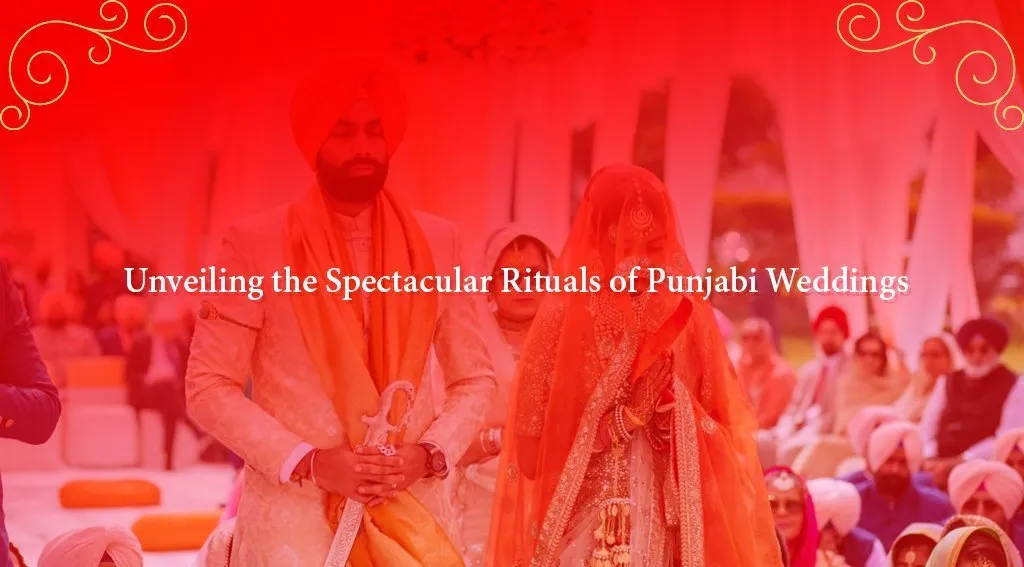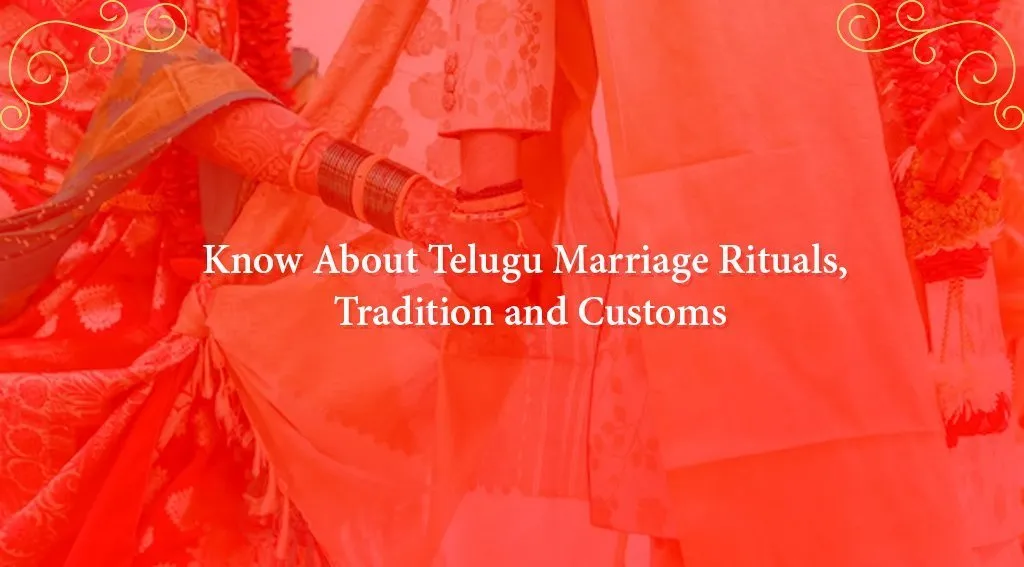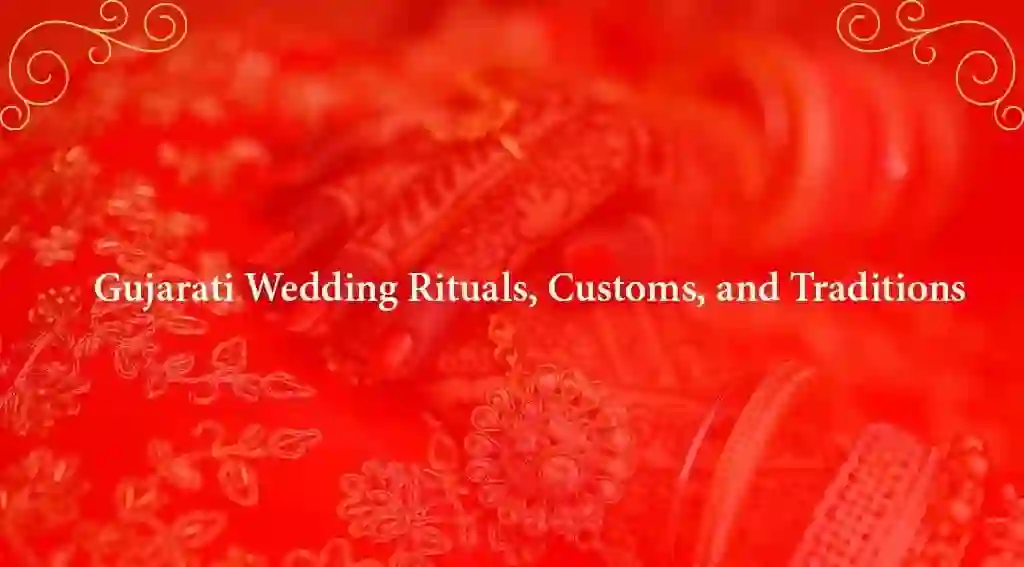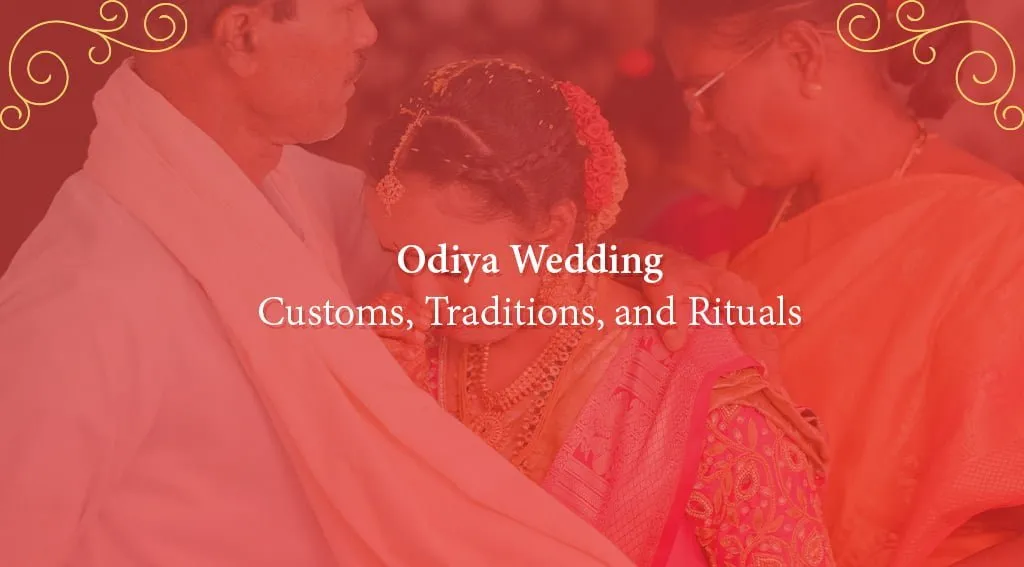In Bengali culture, weddings are a celebration of love and the union of two families. Witness the unique traditions and rituals. Bengali wedding rituals are a reflection of the rich cultural heritage of Bengal. They have been passed down from generation to generation via elders’ advice.
Each ritual has its significance and meaning. It makes the wedding ceremony a beautiful and sacred affair. Here, we will go through the beauty of Bengali wedding rituals, from pre-wedding to post-wedding ceremonies.
Pre-Wedding Rituals
The pre-wedding rituals are the celebration of the upcoming wedding. Here, the families of the bride and groom come together to perform the rituals. Here are some of the pre-wedding rituals in Bengali culture:
Pati Potro

Pati Potro refers to the custom of tying a sacred thread around the groom’s right wrist. It symbolizes his acceptance of the responsibilities of married life. The thread is made of cotton or silk and may be adorned with beads.
Aiburo Bhaat:
This ritual takes place a few days before the wedding. It is a ceremony where the bride and groom’s families feed the couple rice and curd.
Dodhi Mangal:
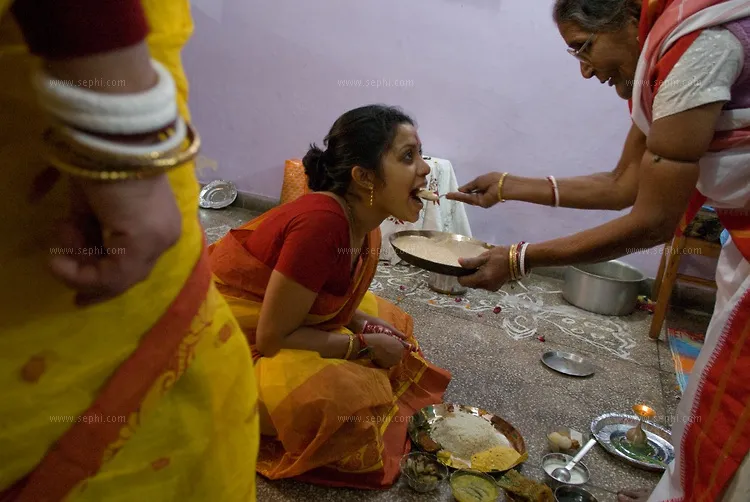
In this ceremony, the bride and groom’s families offer prayers to Lord Ganesha and seek his blessings for the upcoming wedding. The divine blessings ensure that the marriage is filled with happiness and success.
Adhibas Tattva:
Here, the bride and groom’s families perform a puja to invite the gods and goddesses to bless the couple. During this ceremony, the bride and groom are kept in seclusion from their families. It signifies safety from evil spirits.
Ashirbaad:
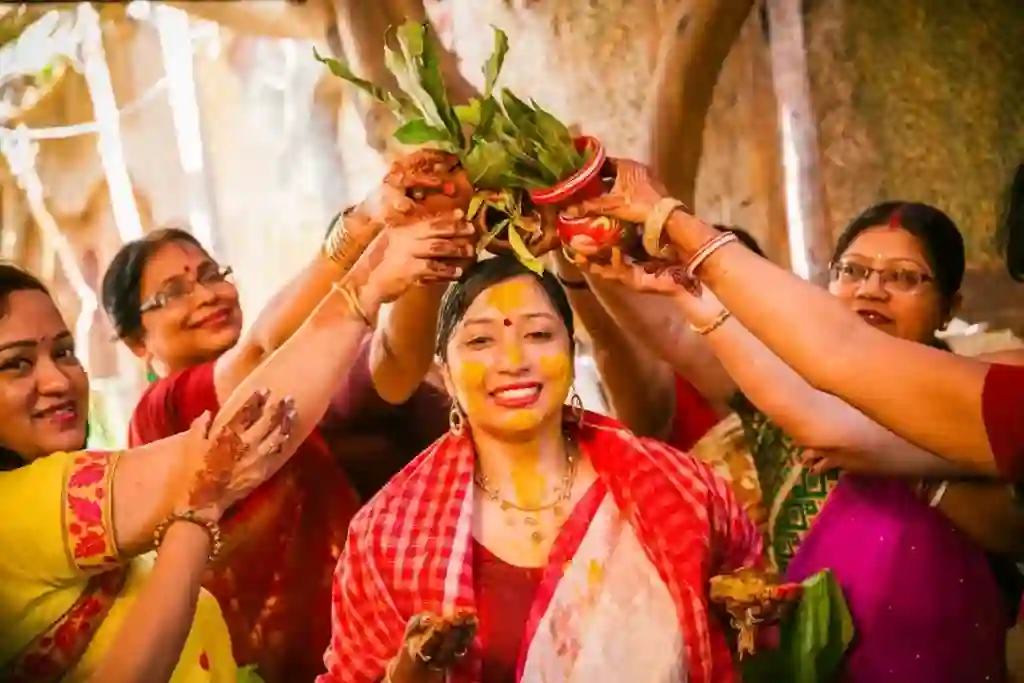
This is a ritual where the elders of the bride and groom’s families bless the couple and wish them a happy married life.
Gaye Holud:
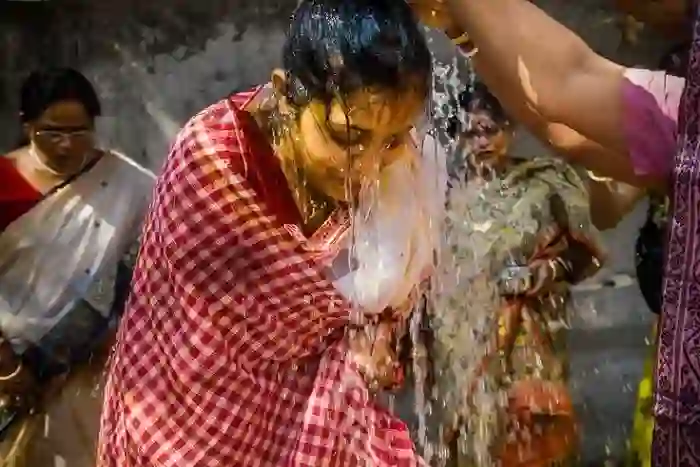
It’s held a few days before the main wedding ceremony. In the Gaye Holud ceremony, turmeric paste is applied to the bride’s and groom’s bodies as a symbol of purification. Turmeric is said to be auspicious and signifies a divine blessing for the upcoming wedding.
Wedding Day Rituals
The wedding day is the most significant day in Bengali culture. Here are some of the wedding day rituals in Bengali culture.
Bor Jatri:
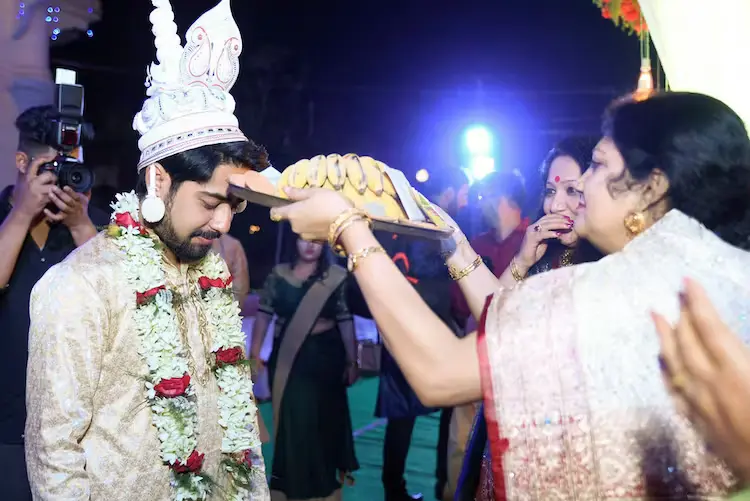
This is a ritual where the groom along with his family and friends, sets out for the bride’s house or the wedding place. The groom is usually on a decorated horse or car. It refers to the groom’s wedding procession that travels from the groom’s home to the wedding venue.
Bor Boron:
Here the bride’s family welcomes the groom and his family. The bride’s mother performs an Aarti and applies tilak on the groom’s forehead. It symbolizes the beginning of the formal wedding ceremonies.
Potto Bastra:
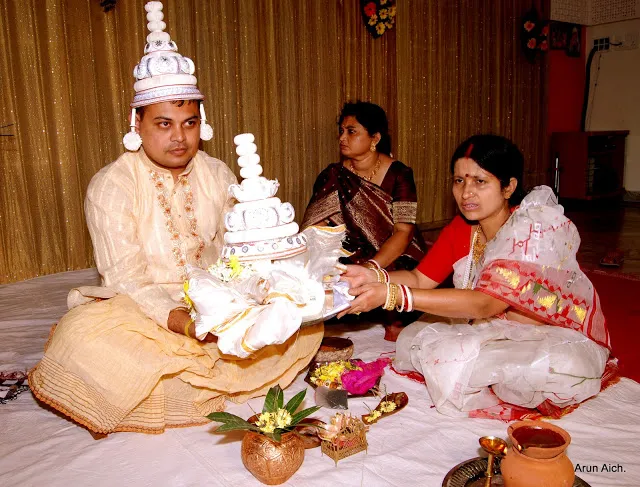
In this ritual, the groom is gifted new clothes by the bride’s family. With the newly offered clothes, the groom proceeds towards the wedding mandap. Exchanging new clothes between the bride and groom symbolizes their acceptance of each other as life partners.
Saat Paak:
This is the most important ritual of the Bengali wedding ceremony. The bride is carried to the mandap by her brothers. Here, she sits facing the groom. The couple holds hands and takes seven vows of marriage.
Mala Badal:
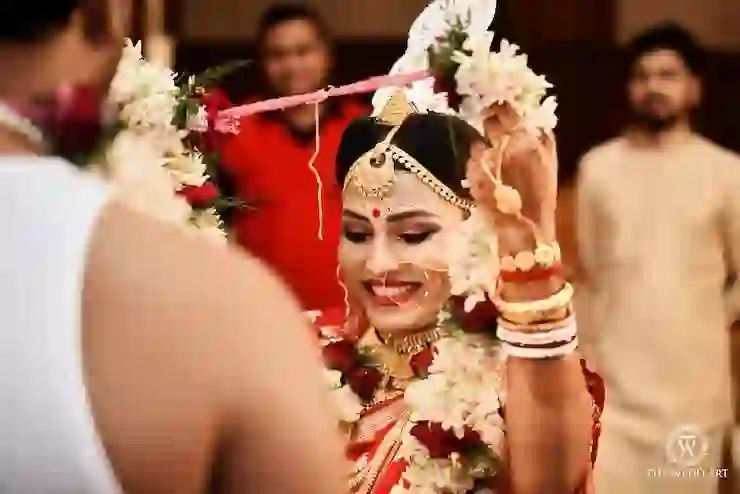
This ritual signifies the acceptance of the bride and groom by exchanging flower garlands. The ritual is filled with joy and blessings from the loved ones witnessing this auspicious occasion.
Sampradan:
This is a ritual where the bride’s father gives his daughter’s hand in marriage to the groom. The groom formally accepts the bride as his wife. He promises to cherish and protect her as an equal partner throughout his life.
Also Read | Unveiling the Spectacular Rituals of Punjabi Weddings
Yagna:
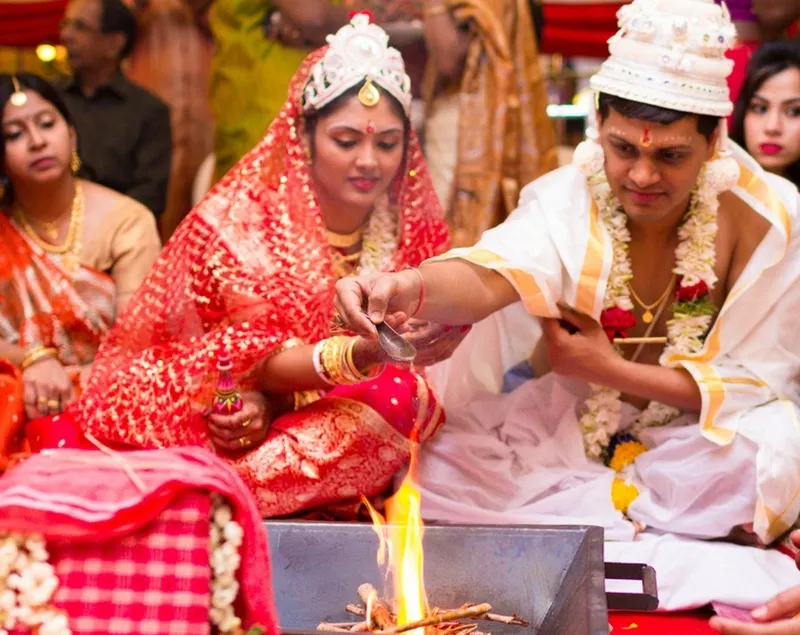
In this ritual, the couple offers puffed rice (khoi) into the sacred fire while reciting prayers. They seek divine blessings for a harmonious and prosperous married life. The couple takes sacred vows and promises to love, respect, and support each other throughout their life.
Post-Wedding Rituals
The post-wedding rituals for the newlyweds to bond and start their new life together. Here are some of the post-wedding rituals in Bengali culture:
Bidaai:
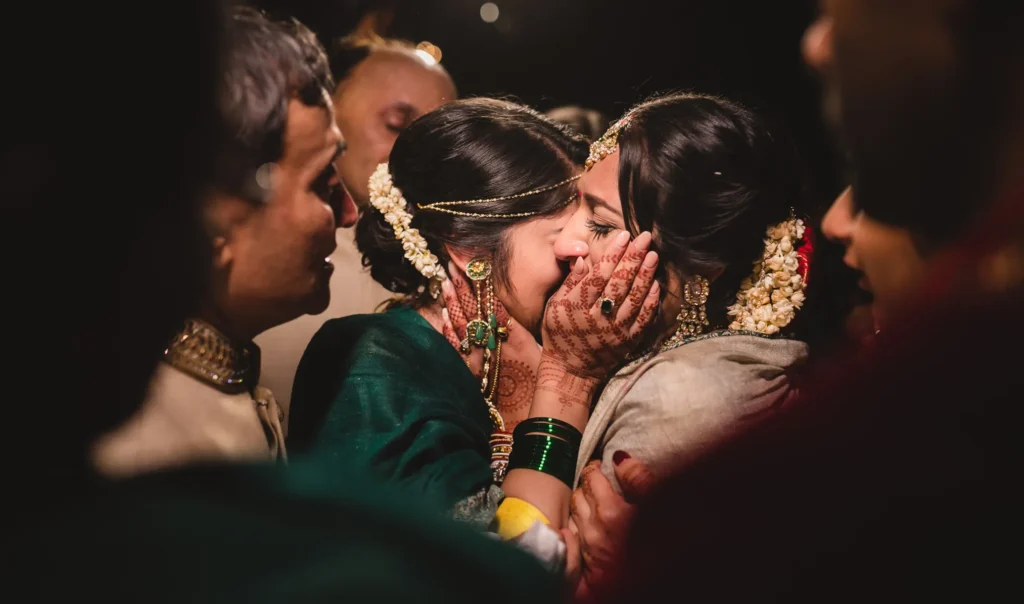
It is an emotional moment for the bride’s family, as they say goodbye to their daughter. Their daughter is now the responsibility of her husband. It’s the start of new journey of the couple.
Bodhu Boron
The Bodhu Boron ritual takes place after the main wedding ceremony. It is a custom where the newlywed bride is officially welcomed into the groom’s household as the new daughter-in-law.
Bou Bhaat:
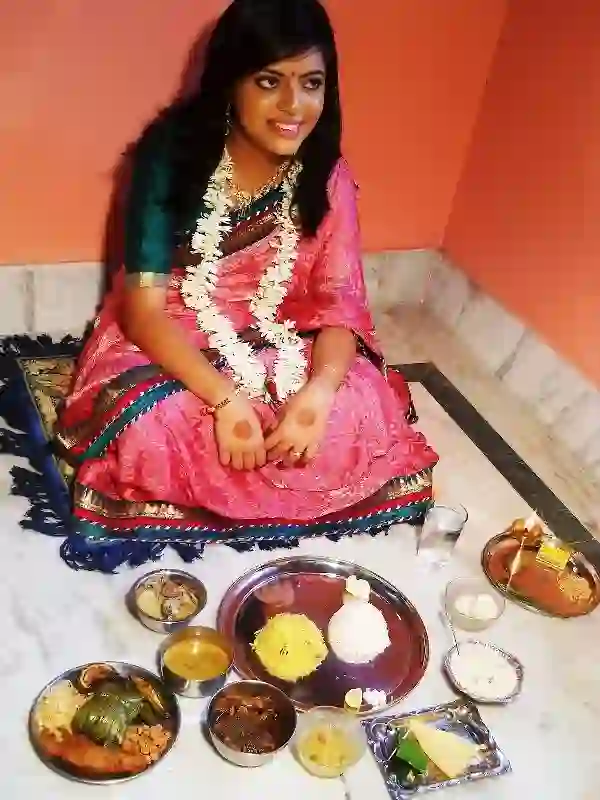
It is a special meal that the groom’s family prepares for the bride. It is the first meal that she eats as a married woman. The bride is dressed in a sari and sits on the ground to eat the meal. It is a symbolic gesture that signifies the bride’s acceptance into the groom’s family.
Kaal Ratri
Kaal Ratri is a ritual that takes place on the night before the wedding day. It is a ceremony that is believed to ward off evil spirits and bring blessings to the bride and groom before they start their new journey together.
Basar Ghar:
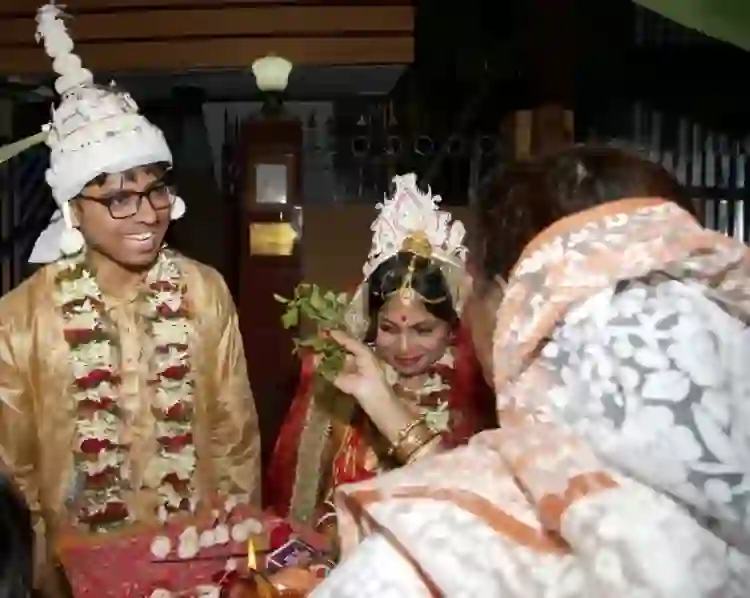
The groom’s mother performs an aarti of the couple as they enter the house together. The bride touches the feet of her mother-in-law as a sign of respect, and the groom’s family showers them with blessings and gifts.
How Matrimilan can be Helpful?
If you are looking for a perfect Bengali bride or groom, Matrimilan is the ultimate solution for you. We understand that finding the perfect life partner is not an easy task, and it can be a stressful experience. However, with Matrimilan, you can find your ideal match with ease and convenience.
Our platform is designed to make the process of finding a life partner simple and hassle-free. We are dedicated to helping you find a partner who shares your values, beliefs, and interests. Join Matrimilan today and let us help you find the love of your life.
Conclusion
Bengali wedding rituals are a beautiful blend of tradition and modernity. Every aspect of a Bengali wedding is significant and beautiful. The Bengali wedding rituals lie in their simplicity & elegance. These rituals are a testament to the rich cultural heritage of Bengal.
FAQs
How is the post-wedding reception celebrated in Bengali culture?
After the wedding ceremony, a post-wedding reception is typically held to celebrate the newlyweds. In Bengali culture, this reception is known as the Bou Bhat or reception of the daughter-in-law. The bride’s family hosts the reception and serves a traditional Bengali feast to the guests. It is a joyous occasion filled with music, dancing, and delicious food.
What are some traditional foods served during a Bengali wedding?
Bengali weddings are known for their delicious and elaborate cuisine. Some of the traditional foods served during a Bengali wedding include rice, fish curry, chicken curry, vegetable dishes, dal, and various sweets such as rasgulla, Sandesh, and Mishti doi. The food is typically served on banana leaves and is enjoyed by the guests in a communal setting.
What is the importance of the sindoor and mangal sutra in Bengali wedding rituals?
The sindoor and mangal sutra are important symbols in Bengali wedding rituals. The sindoor is a red powder that is applied to the parting of the bride’s hair by the groom, and it signifies that she is married. The mangal sutra is a sacred necklace that the groom ties around the bride’s neck, and it represents the bond between the couple. These symbols are believed to bring good luck and prosperity to the newlyweds.


